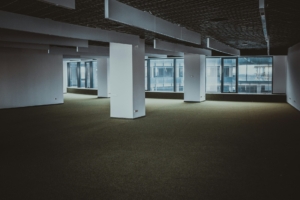
Have you ever walked into a school hallway on a weekend or a shopping mall just before closing and felt an unsettling stillness set in? That eerie sensation of a once-bustling place now eerily quiet is referred to as kenopsia. Another term defined by John Koenig in The Dictionary of Obscure Sorrows, kenopsia describes the almost melancholic emptiness of a space that should be alive with energy.
Understanding Kenopsia
 Kenopsia is not just a word to describe empty spaces. An isolated forest clearing would not evoke kenopsia, while an abandoned factory might. This is because kenopsia focuses on the transition between what a space usually is or was, and what it is now. The silence of an empty amusement park or a subway station late at night tends to feel lonelier than usual due to the absence of life.
Kenopsia is not just a word to describe empty spaces. An isolated forest clearing would not evoke kenopsia, while an abandoned factory might. This is because kenopsia focuses on the transition between what a space usually is or was, and what it is now. The silence of an empty amusement park or a subway station late at night tends to feel lonelier than usual due to the absence of life.
Why Does Kenopsia Feel So Unsettling?
The human brain is wired to recognize patterns and associate environments with emotions. When a space that is typically filled with life suddenly becomes silent, it disrupts our expectations and creates a sort of uncanny feeling. Our minds struggle to accept the contrast between past liveliness and present stillness, and it can lead to a sense of unease.
Kenopsia can also be linked to the psychological phenomenon known as liminality, as the empty spaces that evoke these feelings are often called “liminal spaces.” Much like how Twilight doesn’t really feel like day or night, a familiar yet empty space existing in a lonely limbo can make us feel quite caught up in what we see versus the experiences had in these spaces before.
Everyday Encounters with Kenopsia
You don’t have to explore abandoned buildings to experience kenopsia. It can sneak up on you in ordinary moments:
- Schools after hours: The absence of students and teachers turns school spaces into something unfamiliar.
- Airports late at night: Normally filled with rushing travelers, an empty terminal feels like a forgotten relic.
- A new apartment building: When few tenants have moved in yet, a new apartment building can feel abandoned.
- During the COVID-19 pandemic, when so much of the world was staying inside for the greater good, grocery stores, parks, and even empty roadways induced kenopsia in many of us.
The Emotional Side of Kenopsia
For some, kenopsia can evoke nostalgia or a longing for the past. It can remind us of times spent in those spaces when they were alive with activity. It can trigger memories and emotions we may not have realized were buried somewhere deep inside. For others, it can be deeply unsettling, much like the feeling of being watched in an empty room.
Interestingly, kenopsia is often used in film and literature to create a mood. Directors and writers use the eerie stillness of abandoned places to enhance feelings of suspense, melancholy, or reflection. Think of empty city streets in films like 28 Days Later, or the lack of dialogue that takes place in films where the protagonist is alone.
Finding Beauty in Kenopsia
While kenopsia can feel eerie, it also carries a certain beauty. The silence and solitude of these moments present a rare chance for reflection and appreciation of space in a new way. Instead of feeling discomfort, some people find peace in these moments.
Next time you find yourself in an empty café after closing, a deserted beach at dawn, or a stadium long after the game has ended, take a moment to sit with the feeling. Kenopsia reminds us of the ever-changing nature of life, and urges us to appreciate the spaces we inhabit, even when the vibrance of the space has long since gone.
If you’re struggling mentally or emotionally and you’d like to see if therapy can help, reach out to DK Therapy and book an appointment with our office.




